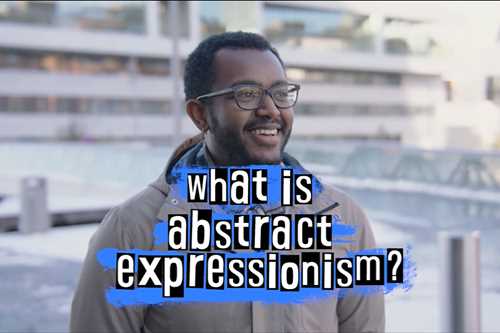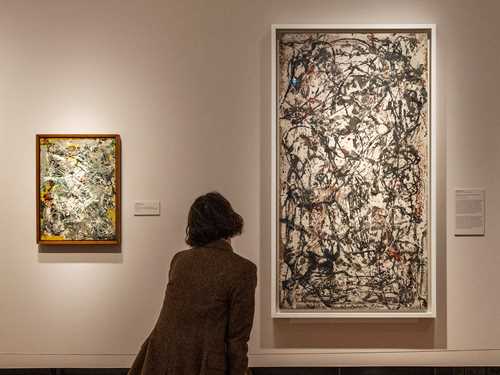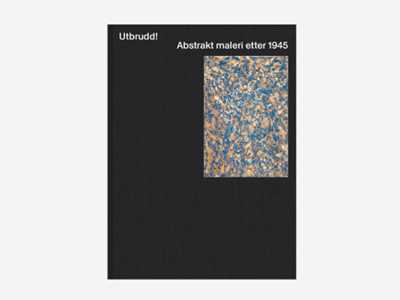The Shape of Freedom – 5 Highlights
A brief guide to the exhibition’s key themes and features.

From the exhibition The Shape of Freedom at MUNCH (23.02.–21.05.2023) Photo: Munchmuseet
Immediately after the end of World War II, artists declared a war of their own: a war against tradition, older techniques and all kinds of art that tried to reflect reality. Instead, in both the USA and Europe, two broad new movements arose in parallel, and often in contact with each other. The Shape of Freedom takes you right to the heart of this exciting and game changing epoch in modern art. You will experience the radical, dynamic moments when artists made decisions, or discovered innovative methods by accident.
Here are some of the highlights of the exhibition:
1. Learn about Abstract Expressionism
The Shape of Freedom is about totally abstract art – paintings that represent feelings and states of mind that exist outside the world you can see. The canvas, and the act of creating the painting, becomes part of the art. The search for new styles and new freedoms led to an enormous range of styles and approaches, from big messy canvases to huge expanses of colours, shapes and empty space, perfect for peaceful moments of contemplation.
Transatlantic Dialogues
Before the war, Paris was the world’s art capital. Afterwards artists flocked to New York, which becomes the new centre. This exhibition traces the conversations and influences that travelled back and forth across the Atlantic Ocean.
Abstract expressionism developed in the USA, and is associated with artists such as Jackson Pollock, Mark Rothko, Lee Krasner, Helen Frankenthaler, Barnett Newman and Franz Kline. ‘Art informel’ was the European equivalent. It means ‘art without form’ and includes artists like Wols, Hedda Sterne, Pierre Soulages, Jean Dubuffet, Asger Jorn, Antoni Tapies and many more.
Watch video: What is abstract expressionism?
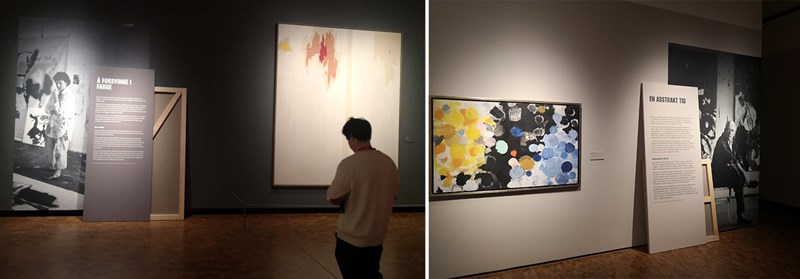
2. Explore Happening Spaces
The exhibition presents the paintings in a setting that suggests the kind of loft spaces and ateliers many of the artists would have used, with rough, raw wall textures, disruptive room dividers, and stacked canvases. As you move through the exhibition you will follow a storyline from the first brave experiments in abstraction, via developments in the USA and Europe, to paintings as a very public performance. And on special selected dates you might find your viewing enhanced by random interventions of live free jazz performed within the exhibition itself!

From the exhibition The Shape of Freedom at MUNCH (23.02.–21.05.2023) Photo: Munchmuseet
3. Sit in Rothko’s Chair
A painting is not a picture of an experience, but is the experience’
– Mark Rothko
A famous photograph shows painter Mark Rothko sitting in a chair and gazing at one of his recent giant abstract paintings. Exclusive to this exhibition, we have built new reproductions of this chair. Rothko and other like-minded painters wanted you to spend time soaking up the colours and shapes and meditating on the feelings they project. Now you can do it from the comfort of Rothko’s own chair!
What drove these artists to make works that often needed intense concentration and physical effort? In our special studio space we have collected photos and videos of artists in their work spaces. This will give you a powerful sense of looking over the artists’ shoulders as they paint, and the physical circumstances in which they were produced.
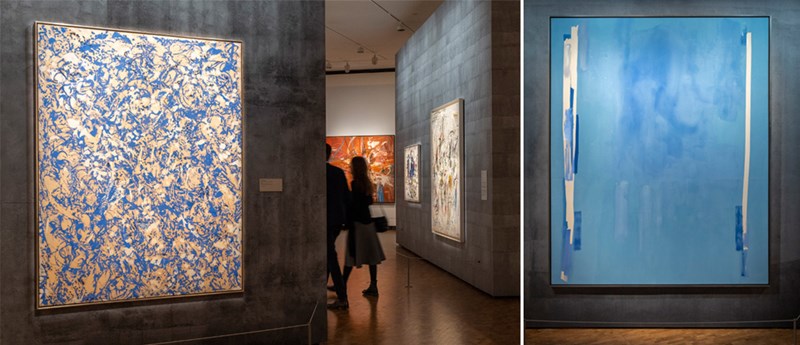
From the exhibition The Shape of Freedom at MUNCH (23.02.–21.05.2023) Photo: Munchmuseet
4. Get to know the pioneer women
Many works in the exhibition are painted by female artists. In The Shape of Freedom you’ll encounter a rewritten story of 20th century abstract art, recognising that women artists played an equally important role. You’ll see how several of the most inventive postwar experiments and discoveries were first made by women.
The photo above to the lefts shows Lee Krasner's Through Blue (1963), one of several artworks by the artist who ended up in the shadow of her world-famous husband Jackson Pollock. To the right is one of Helen Frankenthaler's artworks on display, Blue Bellows (1976).
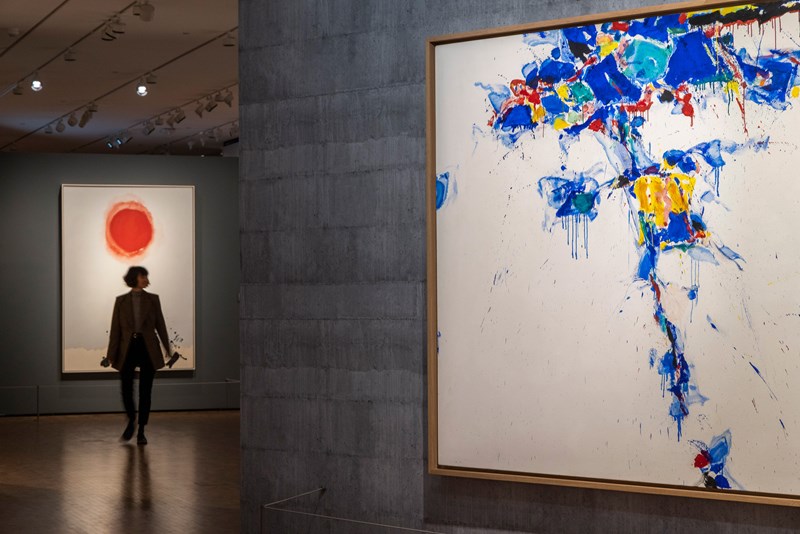
From the exhibition The Shape of Freedom at MUNCH (23.02.–21.05.2023) Photo: Munchmuseet
5. Discover the Scars of War
What effect did the experience of war have on the generation of artists who came right after it? The exhibition clearly shows the different impressions left on people in the USA and Europe. American painters explored wide open, dynamic and idealistic freedoms. Many of the European artists, by contrast, created work that was scarred, damaged and ugly to reflect the ruined landscapes that surrounded them. They also found hope in new materials, colours and artistic approaches. The Shape of Freedom tells a fascinating story of exploration, trauma and recovery that is highly relevant to the destabilised world we live in today.
The exhibition is on display at MUNCH from 23 February to 21 May 2023.


